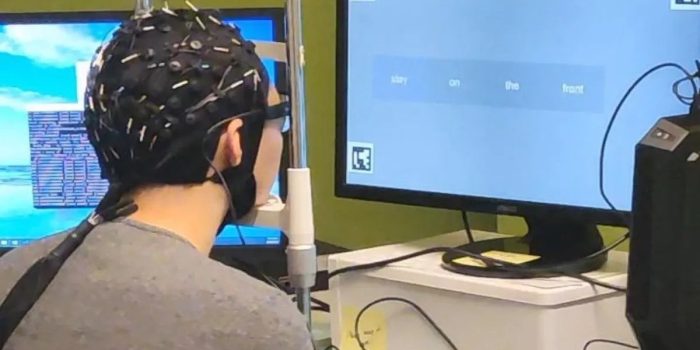Researchers from the University of Technology Sydney (UTS) have introduced a groundbreaking technology—a portable, non-intrusive system capable of decoding a person’s silent thoughts and translating them into readable text. Unlike traditional methods involving invasive surgeries or costly MRI scans, this innovation employs an electroencephalography (EEG) headset or cap to read brainwaves generated during various activities.
In a demonstration, participants wore the EEG cap, and the system translated their brainwave activity into words. The key breakthrough lies in the development of an artificial intelligence (AI) model called DeWave, which segments EEG waves into distinct units with unique characteristics and patterns. This segmentation is crucial for translating complex brainwave data into understandable forms.

DeWave acts as a translator for EEG signals, converting intricate patterns and information into words and sentences. By training the AI model on extensive EEG datasets, it can recognize specific patterns in brainwave signals and associate them with meaningful linguistic representations. This allows the expression and communication of information within EEG signals in a more accessible and human-readable format.
Professor CT Lin, Director of the GrapheneX-UTS HAI Centre, emphasized the pioneering nature of this research, highlighting its significant breakthrough in translating raw EEG waves directly into language without the need for invasive procedures.
Despite the promising results, the system currently exhibits a translation proficiency of 40 percent. The researchers conducted experiments with 29 participants, indicating a more robust and adaptable outcome compared to previous decoding technologies tested on a smaller scale. However, concerns were raised about the model’s tendency to favor synonymous pairs over precise translations, particularly with nouns representing people, places, or things.

Yiqun Duan, the first author of the study, explained that the model’s inclination towards synonymous terms might be due to the brain processing semantically similar words with similar patterns. Despite these challenges, the model produces meaningful results, aligning keywords and forming similar sentence structures.
The researchers aim to enhance the system’s efficiency, aspiring to reach a 90 percent translation proficiency. The study, published on arXiv, awaits peer review, marking an exciting advancement in neuroscience and AI, potentially opening new frontiers in understanding and decoding the complexities of the human brain.


